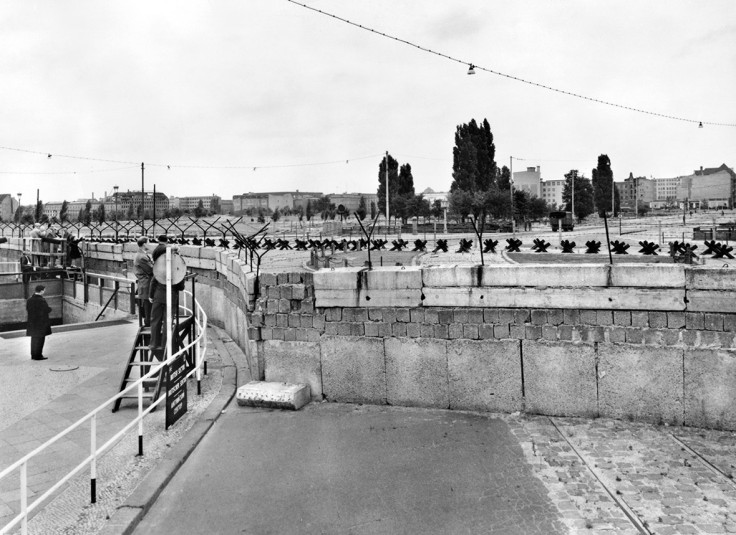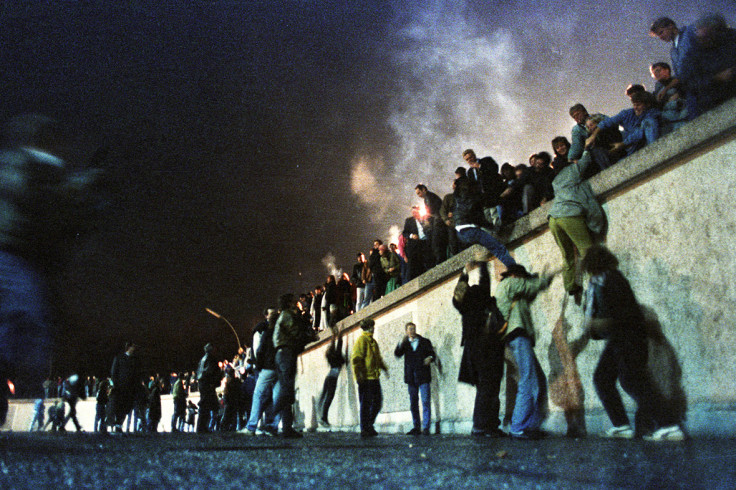Germany marks 55 years since the Berlin Wall was first erected
The most physical symbol of the division between East and West came down 27 years ago.
Berlin is marking the 55th anniversary of the start of the construction of the Berlin Wall, which divided the German capital for almost 30 years, and came to symbolise the Iron Curtain between the capitalist West and the Soviet Union. The mayor laid a wreath at the city's main Berlin Wall memorial, after attending a service at a chapel situated in the so-called 'Death Strip' which divided the city.
Mayor Michael Mueller ppresided over the ceremony, which took place at the memorial on the Bernauer Strasse, one of the main streets in centre of the city, in order to mark one of the defining aspects of the 20th century.
Construction started on the first Berlin Wall in 1961, roughly 15 years after the city was first partitoned due to accelerating tensions between the Soviets and the Western alliance which each controlled half the city. Berlin was the last border crossing between the East and West Germany, after the Inner German border, which separated the divided nation with an imposing barbed wire barrier, was erected in the early 1950s.
Berlin, which was situated within East Germany, rapidly became the area through which citizens. The border was administered by all four occupying powers: the US, Britain, France and the Soviets, making it much more porous. By 1961, roughly 3.5 million people had legally defected to the West.
The first wall took the allied occupiers by surprise. At midnight on Saturday, 12 August 1961, East German police and military units suddenly closed the border and began tearing up streets running alongside it. They ran barbed wire and built fences along the 43km that divided east and west Berlin, as well as the 156km perimeter of the three western sectors.
A generous no-man's land was left to give clear sightlines to soldiers who had orders to shoot anyone attempting to defect. And with that, families were split, West Berlin became an isolated exclave enveloped by an enemy country, and the city went from being the easiest place on the border to defect to the hardest.

The wall would mark a period of nearly 30 years of divison until it came down in 1989, completely cutting West Berlin off from the rest of the world, aside from a small corridor down an autobahn connecting the city to the West German border, and a train service. Soviet military personnel manned checkpoints along the way.
The wall was rebuilt four times, with the last and most sophisticated one completed in 1980, using 45,000 of the iconic slabs of concrete which still dot parts of modern Berlin. They were 3.6m high, lined at the top with smooth pipe to prevent climbers, arranged in two rows with a very wide death zone in the middle to allow guards to easily spot and shoot attempted defectors. Around 5,000 defections were made, with an estimated death toll of between 136 to more than 200.

The first signs the wall would fall came just as suddenly as its erection, when on 9 November of 1989, the politically embattled East German republic announced it would allow its citizens to cross the border. Crowds streamed over and swiftly started chipping away at segments of the wall.
Formal demolition did not begin until 1990, by which time large sections had already been toppled by citizens weary of the divide. Germany would be formally reunified less than a year later, on 3 October 1990.

The British Prime Minister Margaret Thatcher was an especially loud voice speaking out against German reunification. She pleaded with the Soviet president Mikhail Gorbachev not to let the wall fall, telling him: "We do not want a united Germany. This would lead to a change to post-war borders and we cannot allow that because such a development would undermine the stability of the whole international situation and could endanger our security."
The largest remaining original section of the wall still standing is the East Side Gallery, a 1.3km section near the centre of the city along the banks of the river Spree. It features 105 paintings by artists from around the world, painted in 1990 on the east side of the wall – an act which would have been heavily punished while the wall still stood. Other segments exist throughout the city, mostly moved from their original positions. The former death strip, which had been cleared of streets and buildings, has now been built on, including a large and poignant memorial to the Holocaust.
Reunification, both of the city and of the country, has taken a long while to bed in, but the signs are that the two halves of Berlin are now thoroughly integrated. As new generations grow up, the psychic gap between East and West fades more completely, even while the physical symbols remain.
© Copyright IBTimes 2025. All rights reserved.






















